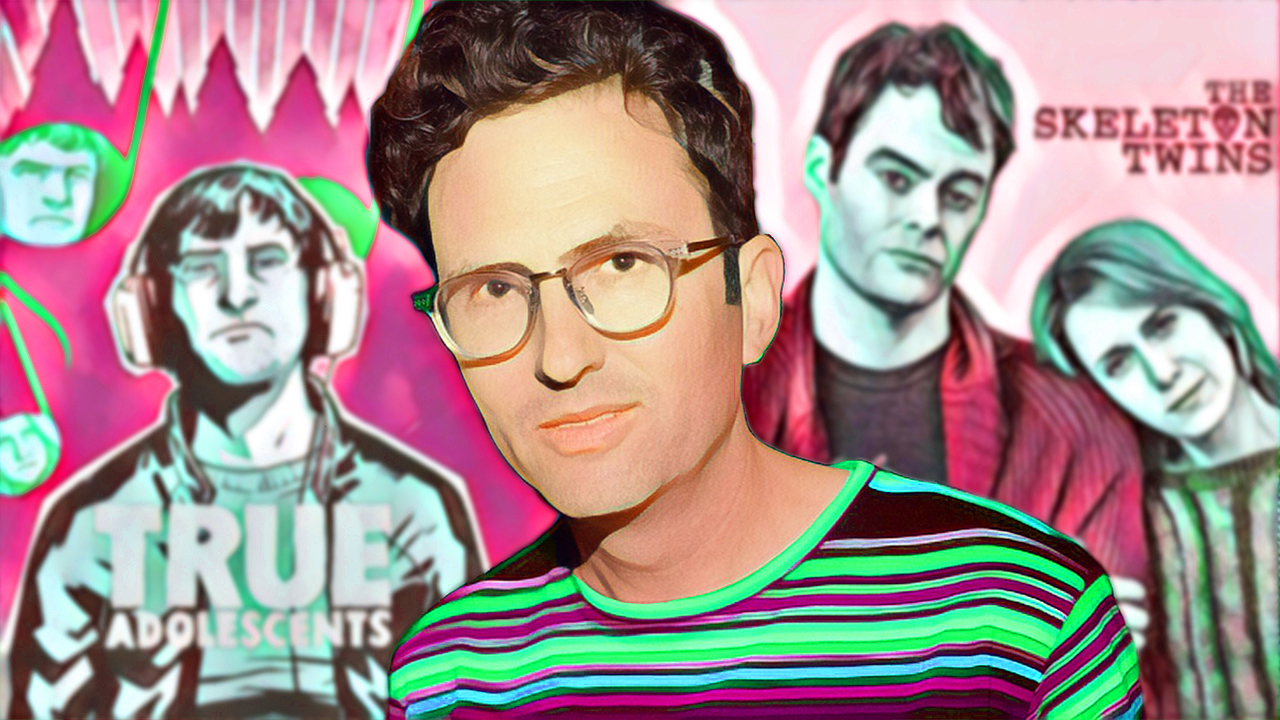About Craig Johnson
Craig Johnson is an award-winning writer-director, best known for 2014’s The Skeletons Twins, starring Bill Hader and Kristen Wiig. His latest project, Alex Strangelove, is a Netflix original movie available now. Lunacy’s own Stu Pollard co-produced Craig’s first feature, True Adolescents.
You can read the first two parts of Craig’s interview with Stu Pollard here and here.
Stu Pollard: Tell us about your process as a director. How do you plan your shots?
Craig Johnson: I like to sit down with my DP and my AD, and do a big rough shot list of the entire movie, scene by scene. It’s not like doing the visuals of The Avengers; it’s more about thematically trying to tell the story of the characters. I’m always trying to remind myself of that, whether it’s in pre-production, production, or while I’m shot-listing. What is the most interesting way to tell the story? How do the visuals combine with what the characters are doing?
Composition, edit, and how we frame negative space are very important. For instance, if you put somebody in the corner of the frame and you leave a lot of open space, it produces an offsetting vibe. I find it really important to have a shot list to start, and riff from there. I love it when I’m on set and I know exactly what I’m going to do.
SP: Is there any room for improvisation?
CJ: Sometimes, I come up with a new idea, or the actor will do some weird blocking. Then, we forget the shot list, and just follow them through on their back and get the whole thing in one shot. That’s part of the fun of doing the scene.
In my experience, the crew doesn’t care much about those day-of changes, as long as it’s not after they just spent 40 minutes doing a huge setup. In that case, your crew’s going to be a little irritated. They’re going to lose confidence in you as a director who knows what he wants. That is your job as a director, to know what you want and to communicate it.
SP: The beauty of having a shot list is knowing what pieces you need in order to make the scene work. So if you come up with a new idea, you can refer to that list to make sure you’re getting all these key moments.
CJ: Yes. Every movie’s a little different. The crew sees what’s happening, and they’re going to adapt to the vibe. We got an actor who is going to block it out, and that’s going to determine a little bit more how we set our shots and how we move the camera and how we get our coverage.
I did a movie called Wilson, with Woody Harrelson and Laura Dern. You could plan out your shot list and your blocking, but it didn’t matter, because when Woody got on set to rehearse, he wanted to feel it and be organic, and he was going to walk where he was going to walk. You could try to convince him otherwise, but that would turn into a heated conversation.
SP: How do you direct your actors?
CJ: You don’t want to give too much direction ever to your actors. Actors can’t hold more than one piece of direction in their heads at one time. So when you’re on set, I always say nothing for the first take. I just let the actors go because I don’t want to interfere with what is in their head. It may be much better than whatever I have in my head. And oftentimes they’ll show up, they’ll do the first take and it’s great. It’s better than I thought it would be and we might do a couple more and then we’re done.
Usually around the third take I might give some adjustments, or if the first take is not what I’m looking for I’ll adjust a little bit on the second take. But adjustments that are actionable and small. Every actor is different. Some want to talk a lot about the characters, some want to go into backstory, some don’t want to have much conversation at all.
For Skeleton Twins, Bill [Hader] spent more time talking about his character than Kristen [Wiig] and I did about hers. With Kris, it was so clear that she understood who this woman was, with all her secrets and all the anxiety she had about how much she was holding inside. Her character is a creature just about to explode, and Kristen can do that so well.
SP: What if an actor’s take on a character is wildly different from what you imagined?
CJ: On Wilson, I sat with Woody before we started shooting. Just out in the backyard, having a drink and talking about the character. He was thinking about doing a voice, and he started talking in this voice. And I just thought, “Oh no, this is so bad. How do I tell him that this is not what I want?”
I come from an acting background, so I try to avoid giving a line reading. Instead, I found myself describing the character. And as I was talking about the character, I found myself talking with a little bit of a voice. He said “Okay, I think I know what you mean.”
First shot of that movie, Woody gets up and I’m not exactly sure what he is going to do. Maybe he’ll just do that whole voice anyway. But he just did this perfect thing, that was perfect for his character.

